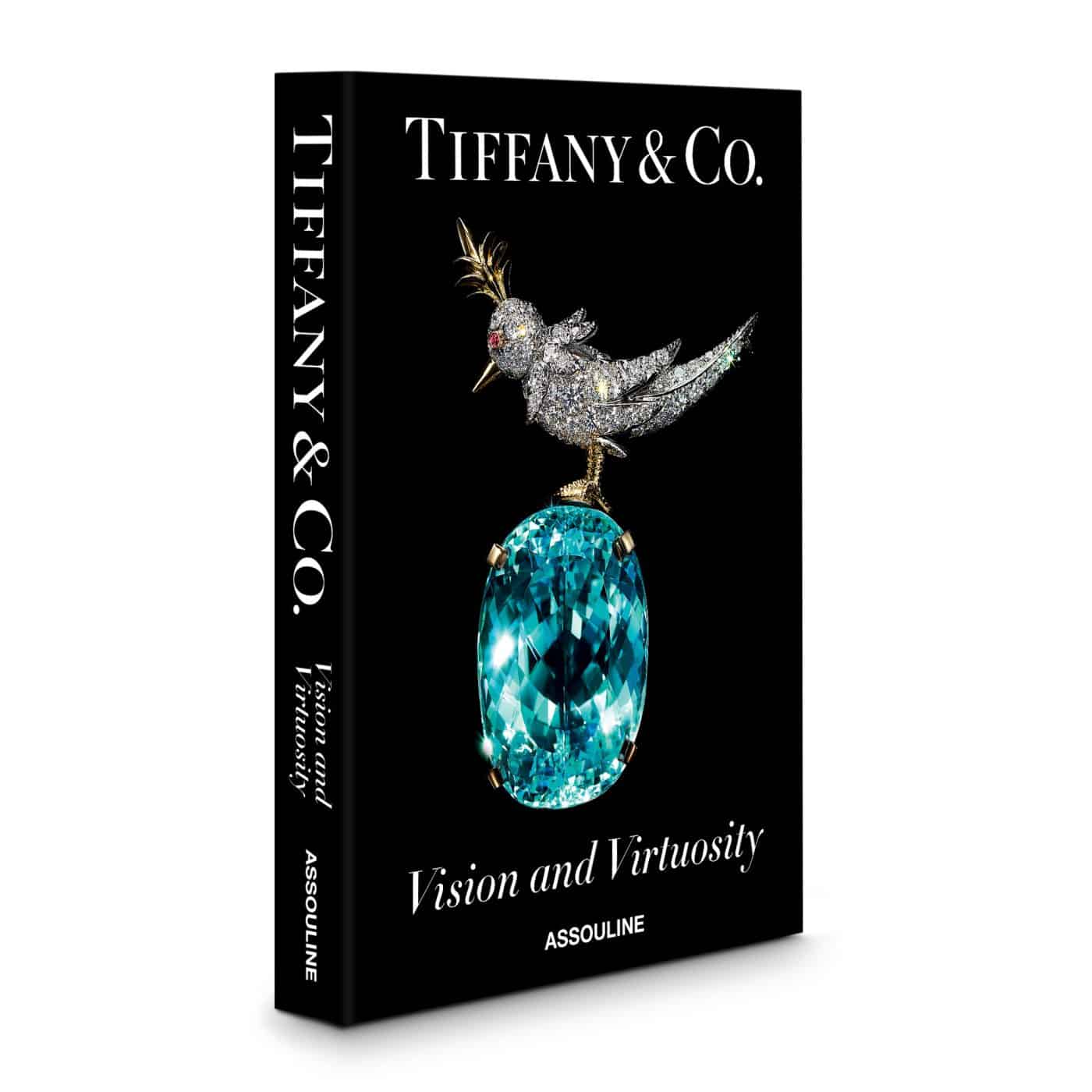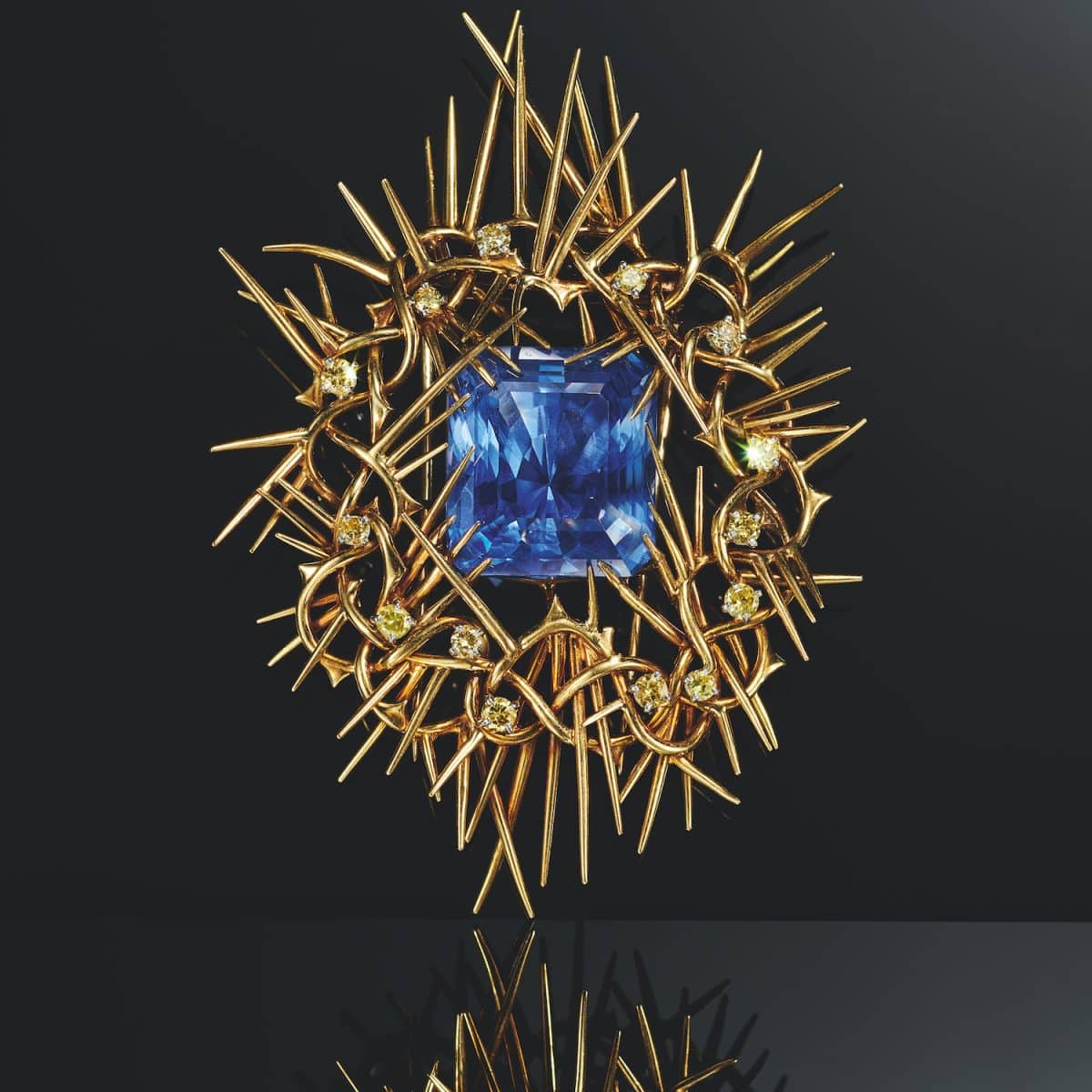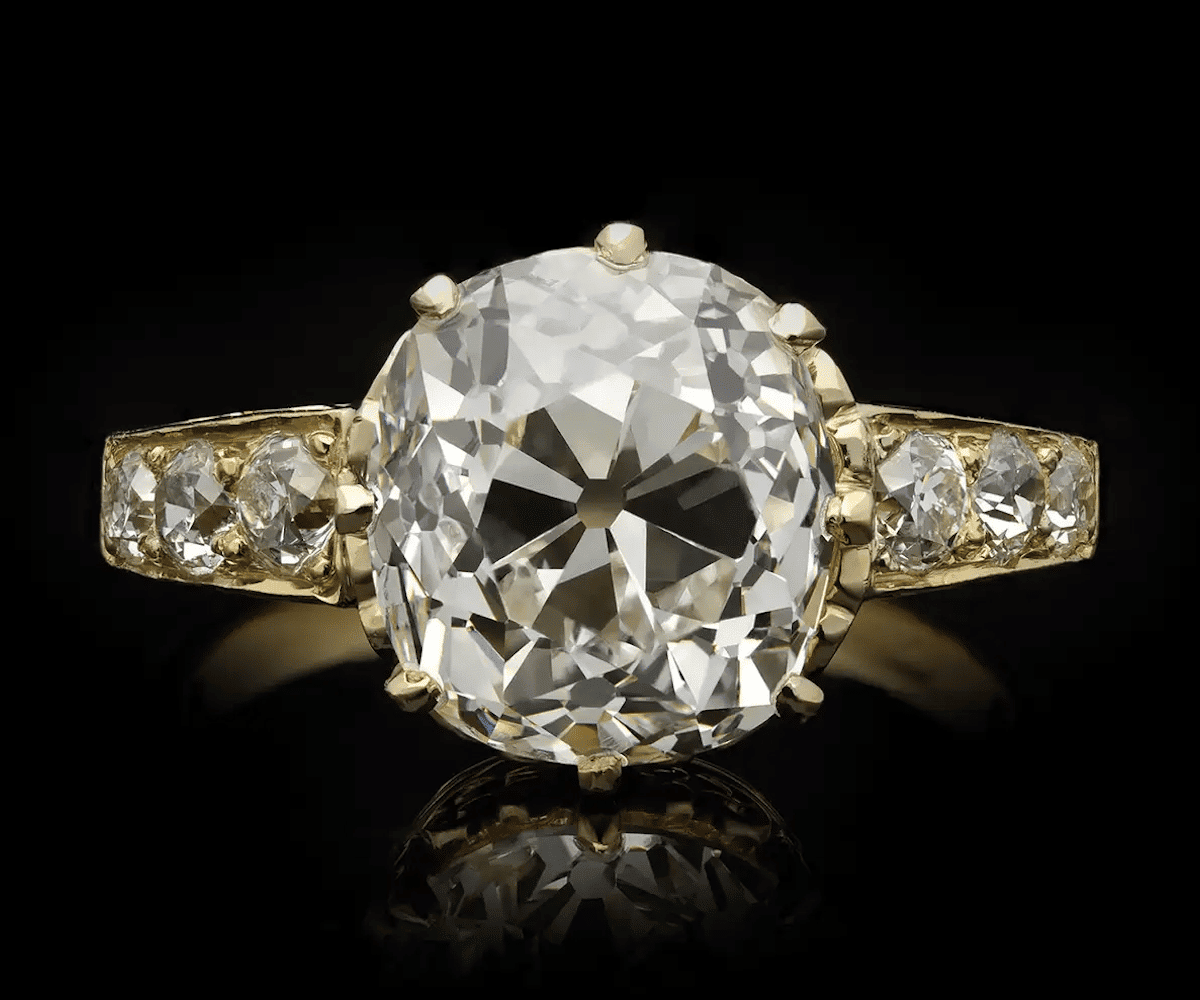September 25, 2022Ever since LVMH acquired Tiffany & Co., in 2021, the French luxury conglomerate has aggressively sought to modernize the 185-year-old New York jeweler, from releasing a collection with cult skateboarding-and-apparel brand Supreme to collaborating on a Fendi handbag in robin’s-egg blue leather, due out next year. Many applaud this new direction, but the new ASSOULINE book Tiffany & Co. Vision and Virtuosity is perfect for those who are nostalgic about the house’s past (and likely bristled at last year’s controversial “Not Your Mother’s Tiffany” campaign).
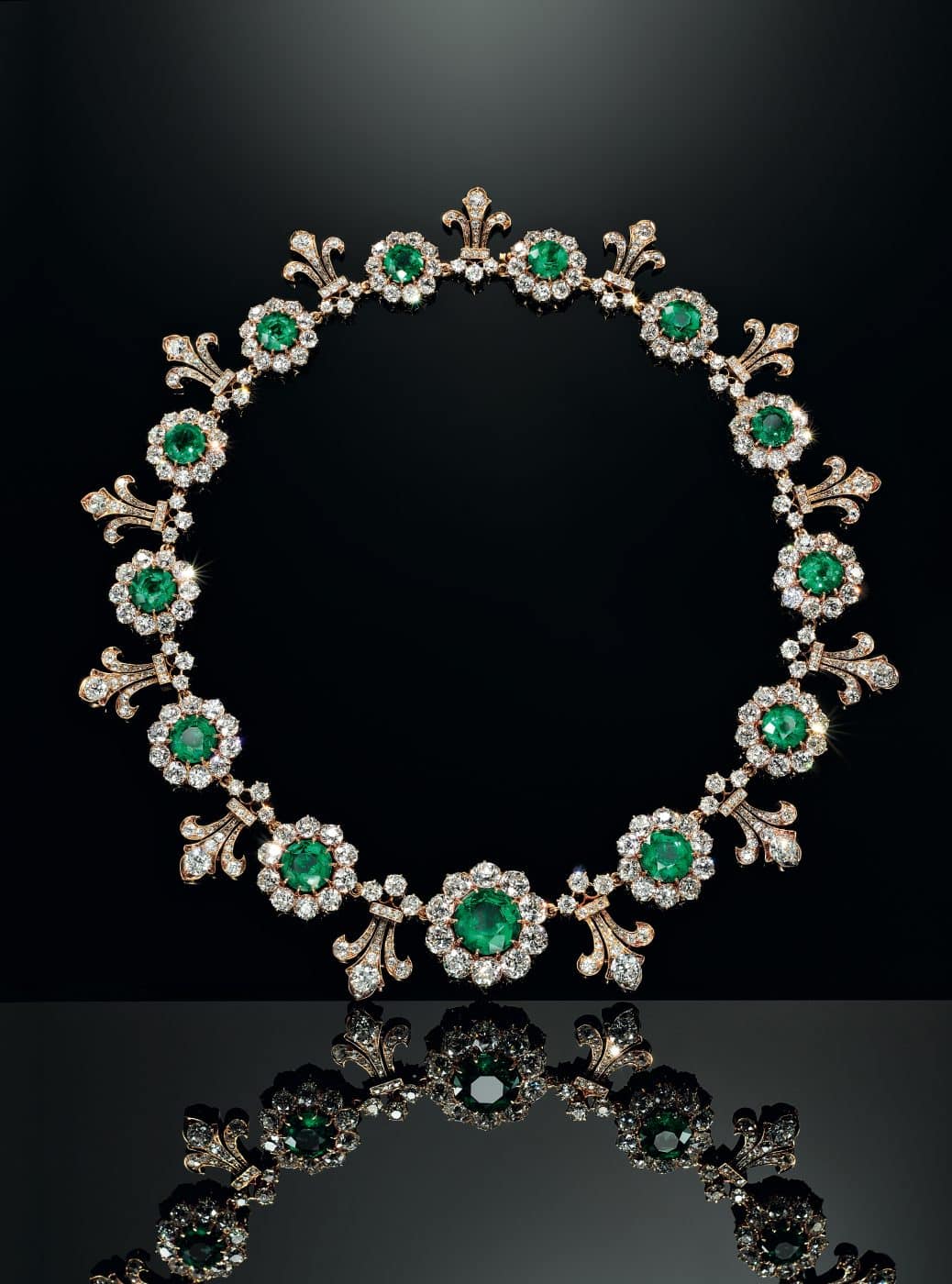
Tiffany & Co. gold, platinum, diamond and emerald necklace, 1868–80. Top: This 1947 Thorns clip by Jean Schlumberger, composed of a sapphire and colored diamonds set in gold and palladium, was owned by Millicent Rogers. Photos by Thomas Milewski/© Tiffany & Co.
Written by noted jewelry author and historian Vivienne Becker, the volume was created as a companion to a recent exhibition of iconic Tiffany jewels, titled “Vision and Virtuosity,” at the Saatchi Gallery in London. However, the book can be fully appreciated on its own. A kind of visual chronicle of Tiffany & Co.’s design triumphs, it highlights the work of such mid-century masters as Jean Schlumberger, Donald Claflin and Angela Cummings, as well as that of 1970s and 1980s darlings like Elsa Peretti and Paloma Picasso, alongside 19th-century creations by George Paulding Farnham and Louis Comfort Tiffany himself.
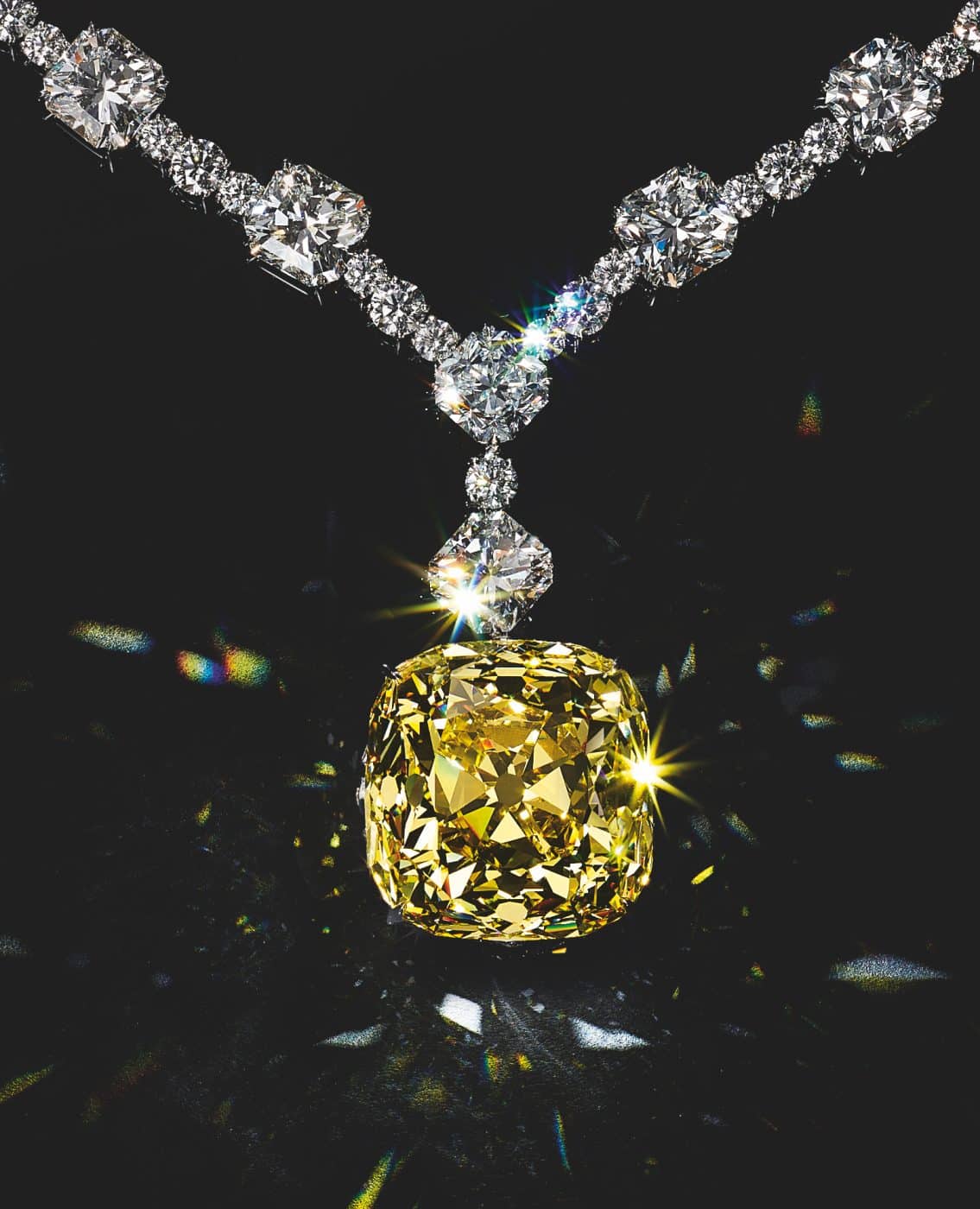
Detail of a 2012 platinum, gold and diamond necklace featuring the Tiffany Diamond as a pendant. Photo by Thomas Milewski/© Tiffany & Co.
An entire chapter is devoted to the Tiffany Blue Book, the house’s high-jewelry catalogue, published annually since 1845. The brand’s history is further preserved and celebrated through anecdotes about the Blue Box and the iconic Tiffany Diamond. There’s even a close-up of text pulled from the script of the 1961 film Breakfast at Tiffany’s.
That the foreword was penned by the late fashion editor André Leon Talley adds a wistful note. It reminds readers that creativity and ideas are ephemeral — that there are eras and there are endings.
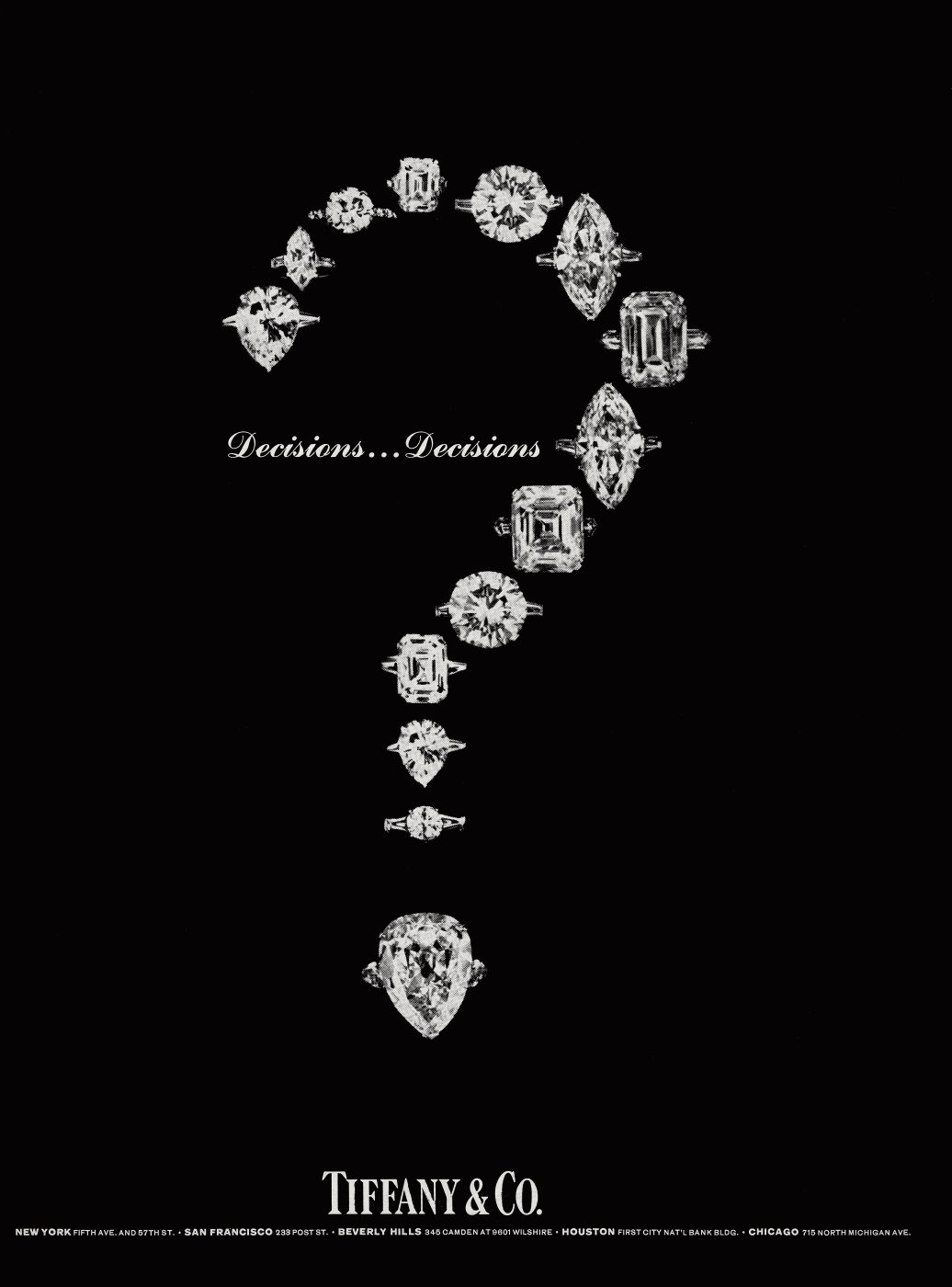
Tiffany & Co. advertisement for engagement rings, 1967. © Tiffany & Co. Archives 2021
The future, however, can be equally enchanting. The new Tiffany campaign, which stars a luminous Beyoncé wearing the house’s most au courant collections, is just one example. As Talley writes in the foreword, jewelry “causes the spirit to sing fine, silent songs of wonder.” “Moon River,” which Henry Mancini and Johnny Mercer wrote for Audrey Hepburn to sing in Breakfast at Tiffany’s, is magical no matter how many times it’s been recorded or performed by others. But there are always those who prefer the original.
